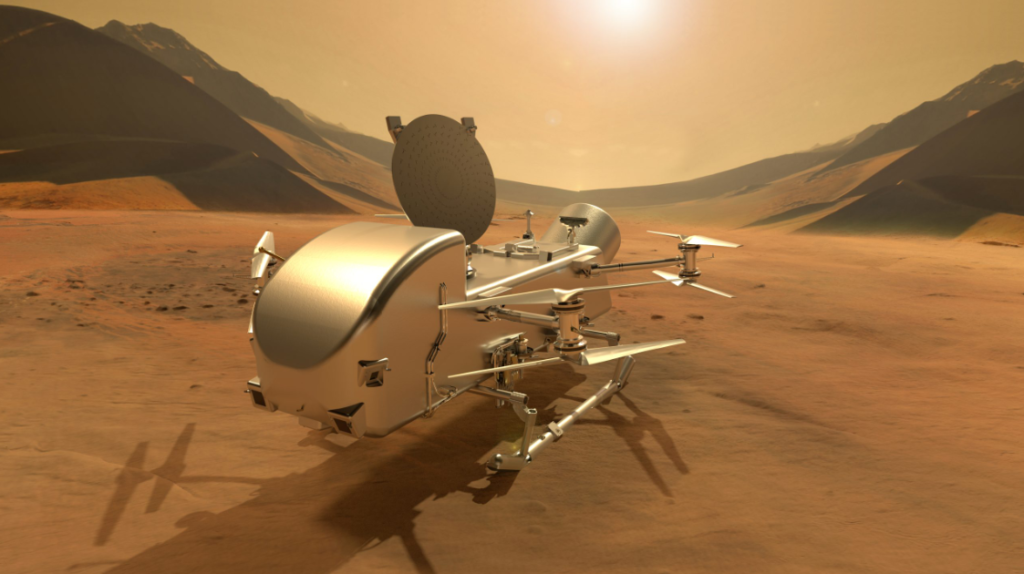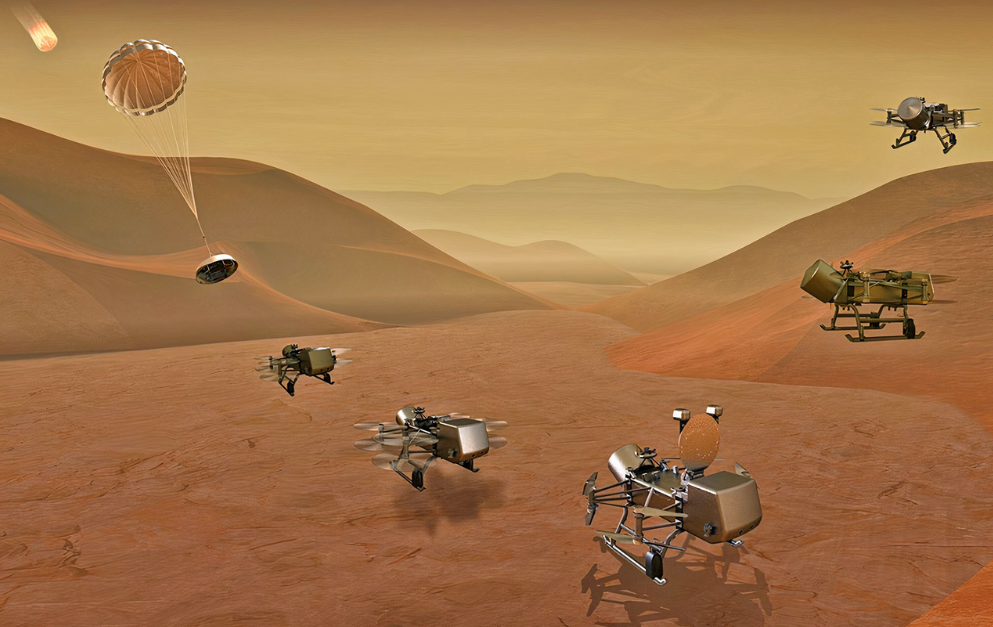NASA’s Dragonfly Mission to Titan could finally discover alien life—here’s what it means for Earth, our understanding of the universe, and future space exploration. Set to launch in 2028, this historic mission could answer one of the oldest questions humanity has ever asked: Are we alone in the universe?
1. What Is the NASA Dragonfly Mission?
NASA’s Dragonfly mission is a revolutionary space project aiming to explore Titan, Saturn’s largest moon. This mission is the first to send a flying drone—called Dragonfly—to another world, where it will fly from location to location to analyze the environment and search for signs of life.

Mission Summary Table:
| Key Component | Details |
|---|---|
| Spacecraft Type | Rotor-powered dual-quadcopter drone |
| Launch Date | Scheduled for July 2028 |
| Destination | Titan, Saturn’s largest moon |
| Arrival at Titan | Expected in 2034 |
| Landing Zone | Shangri-La Dune Fields near Selk Impact Crater |
| Mission Duration | Minimum 3.3 Earth years of scientific exploration |
| Travel Distance | Over 175 kilometers of flight across Titan’s surface |
| Power Supply | Radioisotope Thermoelectric Generator (RTG) |
2. Why Titan? Exploring a Moon That Resembles Early Earth
Titan is not just another moon. It’s one of the most Earth-like bodies in our solar system. Its thick atmosphere, hydrocarbon-rich surface, and presence of organic molecules make it an ideal place to search for the origins of life.
Key Reasons Why Titan Was Chosen:
- It has liquid methane and ethane lakes—a rarity beyond Earth.
- The atmosphere is rich in nitrogen, similar to Earth’s early atmosphere.
- Its surface is composed of complex organic molecules.
- Scientists believe it might have a subsurface ocean, which could support microbial life.
3. Dragonfly’s Scientific Goals: What Will It Search For?
NASA’s Dragonfly is not just flying to Titan—it will actively search for signs of alien life and decode the moon’s chemistry. Here’s what the mission hopes to achieve:
- Analyze organic compounds that may represent prebiotic chemistry.
- Search for biosignatures—chemical signs that could indicate past or current life.
- Study Titan’s geology, including dunes, craters, and possible cryovolcanoes.
- Explore surface conditions and atmospheric chemistry to assess habitability.
4. How Titan’s Secrets Could Transform Life on Earth
Dragonfly’s exploration of Titan may answer how life began—not just on that distant moon, but right here on Earth. Titan offers a model of early Earth’s environment, making it an important case study for understanding the origins of life.
Here’s what we could learn:
- How organic molecules evolve into life.
- What makes a planet or moon habitable.
- Whether life exists outside Earth.
- New strategies for future human space exploration.
5. What This Means for the Future of Space Exploration
If Dragonfly succeeds, it could inspire similar drone missions to explore other celestial bodies—like Europa or Enceladus. It may also guide future human missions to outer planets and even change how we define “life” in the universe.
Final Thoughts: Will NASA Find Signs of Life?
The Dragonfly mission is one of the boldest scientific undertakings of this generation. With advanced technology and a precisely planned timeline, NASA could uncover evidence of alien biology or at least deepen our understanding of how life might form under different planetary conditions.
Its success could reshape not only science but also our place in the universe.
[USnewsSphere.com / NASA]





